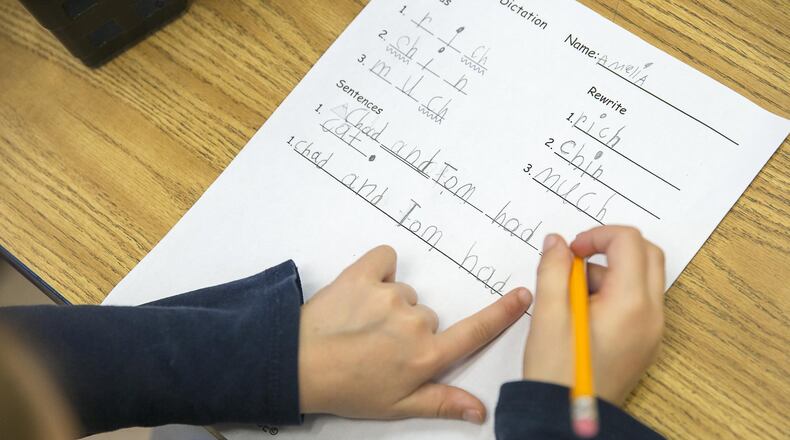Georgia public schools were awarded more than $400 million in federal pandemic relief funds last week, but they won’t spend all of it on their own students: they must share it with private schools.
Although that was expected, a new legal interpretation from Washington, D.C. that allows non-profit private schools to receive more than normal was not.
The federal CARES Act money is being divvied among school districts using the Title I formula that allocates federal funding each year for low-income students. Districts with more low-income students get more, and typically share it with private schools for their low-income students from the same area. With the CARES relief aid, districts are being told to share it with private schools based on the private schools’ total enrollment, regardless of how many of their students are rich or poor.
That guidance from U.S. Education Secretary Betsy DeVos has triggered a national dispute that is reaching Georgia. The crux: whether the funding should be distributed along traditional Title 1 guidelines or in a different way as emergency funds.
A national school superintendents group has asked DeVos to revise her guidance to focus on low-income students at public and private schools. Locally, leaders of Georgia teachers and school administrator groups say public schools should be the top priority and that DeVos’ guidance will increase the need to furlough public school teachers and cut public programs.
“Creating a rule to allow a larger share of that money to go to private schools and beyond that to go to private schools that don’t even have any poor students is unconscionable and just plain wrong,” said Verdaillia Turner, president of the Georgia Federation of Teachers.
Public schools aren’t the only victims of the coronavirus, though.
“It’s a national emergency. Every school is affected. Every kid is affected,” said Sister Dale McDonald, whose organization lobbied to get private schools included in the relief package. As with public schools, private schools will have to provide trauma counseling, laptops and internet service, cleaning and disinfection of buildings and teacher training.
“There are a lot of schools that are on the margin, and they’re just making their budget every year,” said McDonald, public policy director of the National Catholic Educational Association. “They’re not all those fancy schools that you hear about.”
It is not known yet how much of Georgia's CARES funding private schools will see. The federal government awarded Georgia $457 million, and the state Board of Education voted last week to send $411.5 million of it to school districts for now.
DeKalb County, a big metro Atlanta district with endemic poverty, got the largest outlay. Officials there ran numbers for The Atlanta Journal-Constitution under an assumption that private schools with 6,000 students would request their portion of the funding. Under that scenario, private schools would receive nearly $2 million of DeKalb’s $33.6 million allocation.
In the fall, 585 private schools reported enrollment of 102,535 Georgia students, according to the Georgia Department of Education — about 6% of the 1,760,739 students enrolled in public schools as of early March.
Cristo Rey Atlanta Jesuit High School is among the private schools that will likely seek the aid. It has 525 students, all from low-income households. It doesn’t normally accept federal poverty funding, but with this pandemic, school President Bill Garrett said, “there is clearly enough need.”
If the school returns to in-person service, bathrooms will have to be disinfected four times a day, he said, which will raise his janitorial costs. If students and teachers must continue schooling from home, he will need a more robust online platform.
Garrett had many questions about the funding, such as what kinds of expenses would be allowed, when the money would be available and what type of obligations would be required to receive it. Time is running short. Fall classes start in just over two months, leaving little time to prepare.
“We also have to know if we’re coming back in person or remaining remote,” he said, “and I don’t know if we’re going to have answers to any of those questions anytime soon.”
PRIVATE SCHOOL ENROLLMENT
Last November, school districts around the state counted 102,535 students at 585 private schools. The tally is based on where private school students live, not the location of their school.
Atlanta: 7,718 students at 50 private schools
Clayton County: 1,131 at 75
Cobb County: 8,819 at 88
DeKalb County: 8,829 at 124
Fulton County: 11,121 at 158
Gwinnett County: 6,959 at 149
SOURCE: Georgia Department of Education
About the Author
Keep Reading
The Latest
Featured


